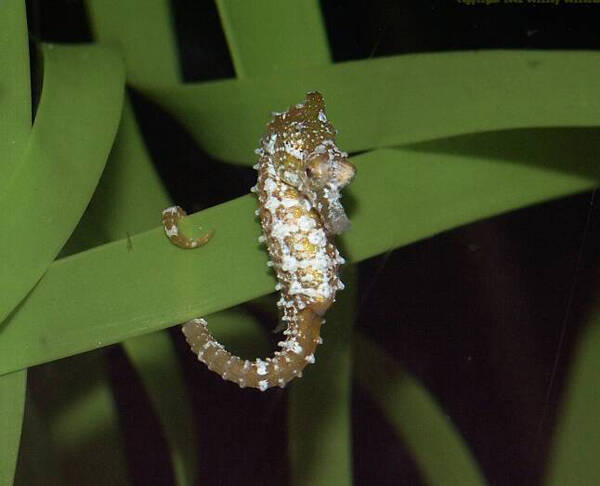
Alias Hippocampus zosterae,Dwarf Seahorse
Family O.Acanthopanax F.Syngnathidae G.Hippocampus
Weight No verification information
The dwarf seahorse is the smallest of the Syngnathidae and Hippocampus.

The diet of the dwarf seahorse consists of live prey, including small crustaceans such as amphipods, shrimps, other small invertebrates and fish fry. When foraging, they sit in a position secured by their tails and wait for prey to approach without moving. Once prey is spotted, the young seahorse will attack the prey and suck the prey through its nose.
The breeding season for young seahorses begins in mid-February and ends in late October, depending on day length and water temperature. Although males hatch, young seahorses do not show a reversal of gender roles, with males still competing for mates. For example, males will twist their tails, slam their heads at each other, and make snapping sounds when competing with females.
The hatching rate of young seahorses is not high, with only 3-55 fully independent pups released from the male pouch into the environment after a gestation period of about 10 days (Masonjones and Lewis, 1996; Lourie et al., 2004). Newly released pups are about 8.5 mm long and are fully formed seahorses that require no further care from either parent. During the breeding season, a pair of seahorses will reproduce within 4-20 hours after the male releases the pup from the brood pouch.
Extensive research and fishery-independent monitoring data have been available to describe changes in seahorse populations in the northern Gulf of Mexico and along the Atlantic coast of Florida (which accounts for 46% of its geographic range) since 20 years ago. Based on analysis of available data, overall seahorse populations appear to be stable.
Major potential threats to seahorses include development for the aquarium trade and loss of seagrass habitat.
Listed in the IUCN Red List of Threatened Species (IUCN 2012 ver 3.1) - Least Concern (LC).
Protect wild animals and eliminate game.
Maintaining ecological balance is everyone's responsibility!